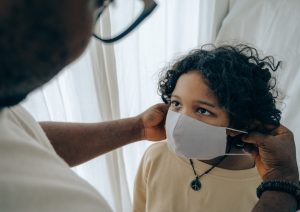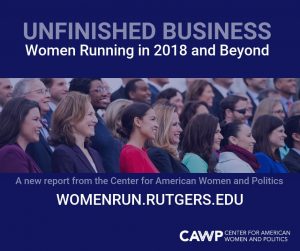By Natalia A. Bonilla-Berrios
LatinaLista
A young environmentalist leads the way in Puerto Rico to show how nature and humanity depend on one another for survival.
Ana Elisa Pérez Quintero’s love affair with nature began when she was only three-years-old and dunked her face into a mangrove swamp.
It was this first real contact with wildlife, along with growing up near the beach, that set Ana Elisa, now 21, on the path of becoming a promising young Puerto Rican environmental activist.
 Curly dark-haired, tan skin and with an enigmatic smile, Ana Elisa didn’t take a serious interest in ecology until she received some shocking news: her father was diagnosed with cancer.
Curly dark-haired, tan skin and with an enigmatic smile, Ana Elisa didn’t take a serious interest in ecology until she received some shocking news: her father was diagnosed with cancer.
“I started to read, to learn more about this disease and what was the cause of it,” Ana Elisa said. “So, when my father died, when I was 13, I realized that the majority of cancers originated from environmental problems.”
Ana Elisa absorbs the beauty of Punta Cabeza Chiquita located in the Northeastern Ecological Corridor.
At 13 years-old, Ana Elisa volunteered with Iniciativa Comunitaria, a non-profit organization that provides a variety of health-related educational programs to different communities on the Island. There, she met other teenagers who were fighting for the conservation of the Northeastern Ecological Corridor — 3,107 acres of a natural reserve coastline.
In October 2009, the current governor, Gov. Luis Fortuño, revoked the natural reserve designation of the Northeastern Ecological Corridor to allow new road and tourist-focused construction.
“This experience made me connect the health of the ecosystem with the human health and how urban construction in all its forms can carry sicknesses,” she said.
A network of environmental activism
With her friends, Ana Elisa joined the Sierra Club of Puerto Rico’s campaign “Coalition of the Pro-Northeastern Ecological Corridor.” Elisa joined not only because all of her family lived near this region, but because she said it was “a matter of environmental justice.”
However, Ana Elisa noticed that while many organizations were fighting to conserve the Corridor, everyone was acting independently of one another. She knew the fight could be more effective if everyone was joined under one umbrella.
She and her friends decided to create the non-profit GAIA to promote civic participation in ecology.
GAIA, whose Spanish acronym means Interdisciplinary Environmental Groups Alliance, promotes civic participation in the ecological conservation movement in three areas: Research, Education and Professional Development. The non-profit also has a K-12 school program that teaches students how to engage more efficiently with their country’s natural environment.
“We take GAIA everywhere we go,” Ana Elisa says while reflecting on its meaning.
The truth is GAIA means more than the organization she works for as General Coordinator; it’s a synonym for Mother Earth and also an important theory on how ecosystems function world-wide.
“GAIA is what it is now, due to all the people that belong to it. Without them, GAIA will not work,” she said. “Our ultimate goal is to integrate the people into ecological conservation, and not do it apart from them.”
That is one of the reasons why Ana Elisa is currently studying for a Bachelor’s degree in Human Ecology at the University of Puerto Rico, Rio Piedras Campus.

Ana Elisa helps in the collection of aquatic invertebrates from the Róbalo River in Puerto Williams, Chile.
“At first I wanted to study biology, but as a doctor I could only improve the health of one person each time. With ecology, I could help improve human and environmental health, all at the same time,” she said.
Undoubtedly, her work has not gone unnoticed. In October 2010, she became one of the six young environmental activist winners of the Brower Youth Award, a recognition she describes as a “great way to connect GAIA with other groups and to validate our efforts.”
Breaking stereotypes
Although her determination has helped her achieve internships, such as the one she is in right now at the Bio-cultural Conservation Program, where she spent two months of doing research on Navarino Island in Chile, this Puerto Rican has been perceived to have a certain amount of machismo in the profession.
“Many women start studying ecology, but they never finish,” Ana Elisa said. “They get married, have kids, and when they wish to return it is a bit late. I want to defy that (trend).”
In addition to the gender issue, Ana Elisa must also contend with discrimination, at least in the United States. In New York, she took a course where she was the only Latin American woman in the class. It wasn’t long before she crashed head-on with certain stereotype perceptions her American classmates had of her.
“Few really know what it is to be a Puerto Rican. Here, the people think we are not smart and as a woman it is worse because they think we are easy or not serious,” she said.
Ana Elisa experienced another displeasing encounter recently when she came from Chile to the United States — to continue her internship in Texas — and got stopped and questioned at the airport while her fellow American classmates passed easily through with their scientific samples.
“It is a matter of stereotypes,” Ana Elisa said. “There is no respect for us necessarily in this profession. As a woman, yes, it is challenging to succeed, especially in the US.”
Whether or not she remains open to opportunities to further develop herself as a professional and give GAIA an international voice, she does plan to continue fighting for the Corridor so it becomes once again a natural reserve.
At the same time, the young activist is researching how the Island’s environmental problems are like others happening in other countries, in the hopes of one day linking Nature with Humankind.
“I wish to continue working with GAIA,” Ana Elisa firmly declared. “To one day make a conservation community in the Caribbean.”
Natalia A. Bonilla-Berrios is a Latina Lista contributor from Puerto Rico where she is a student journalist and attends the University of Puerto Rico.




